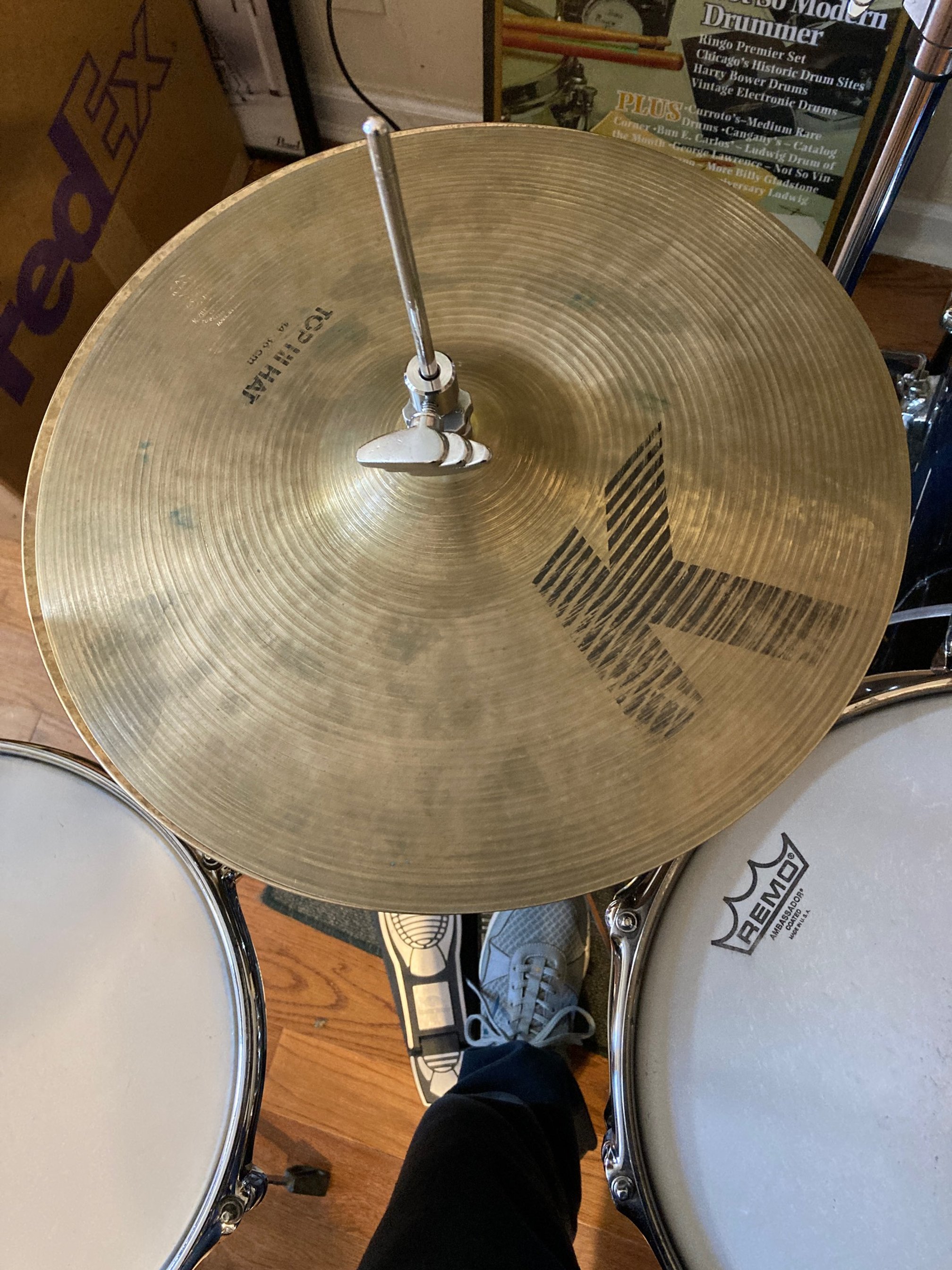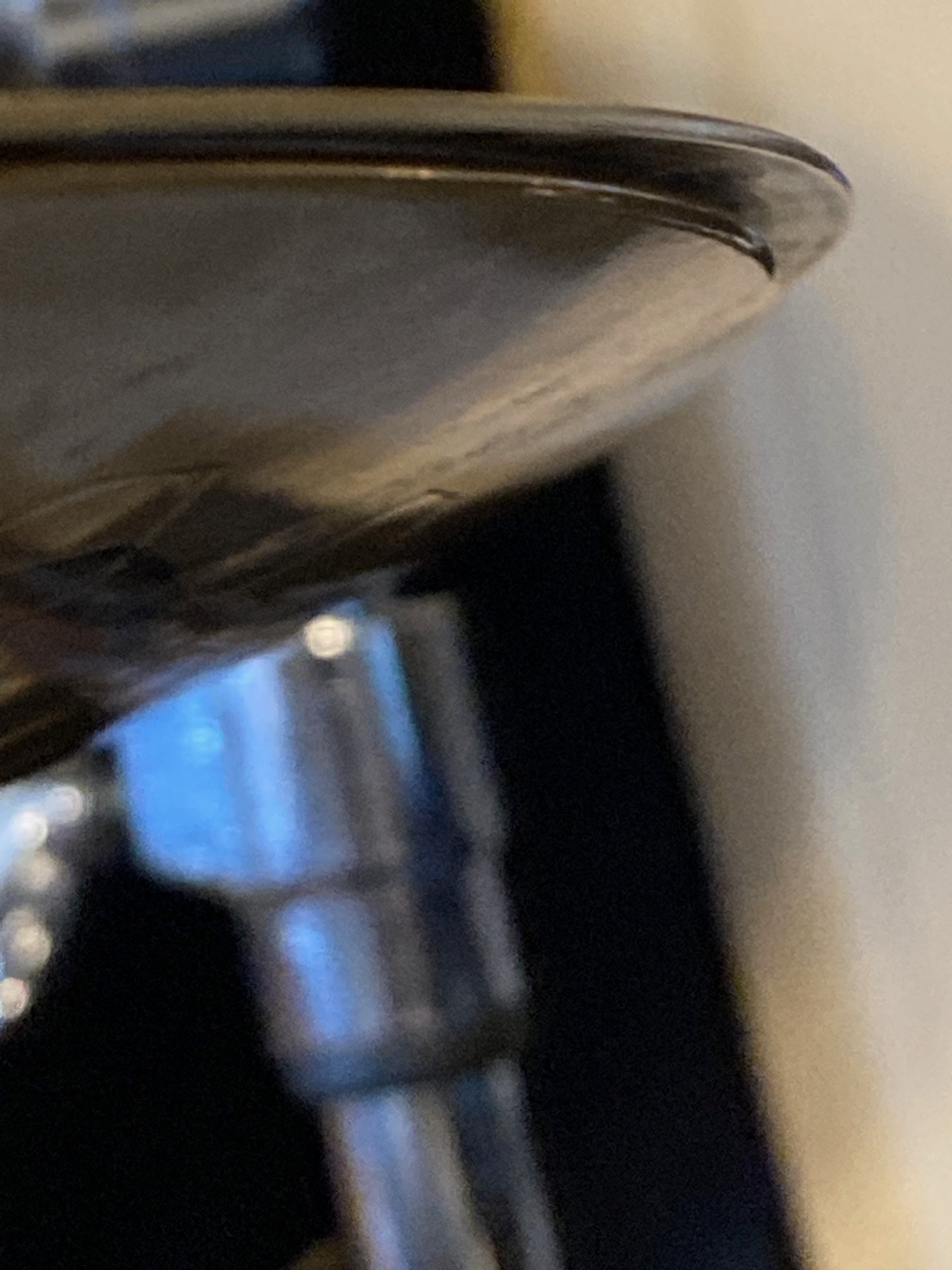Well, the hi hat tilter debate hasn’t actually ever started as far as I know, so I’m starting it! What is the correct side for the hi hat tilter screw; near side or far side?
Now, this is some real drum nerd stuff here to sink your teeth into. For years, I put the tilter on the far side, which tilted the cymbals downward toward me, to get a louder “chick” sound with the pedal. I thought that the main purpose of the tilter was only to keep the cymbals from air locking which is what we all know happens sometimes when the top cymbal hits exactly flush with the bottom cymbal - it “poofs” - no “chick” sound when using the pedal. But later I found that the tilter has another purpose which is just as important as preventing air-lock. If the tilter screw is positioned nearest you where the sticks hit, the cymbals will tilt downward toward you. The top cymbal will overlap the bottom cymbal on the playing side. Why is this important? Because it cuts down on chewing up the shoulder of the sticks, drastically. Let me explain.
I chewed up sticks on the hi hats for years; decades. I hit with just the tip a lot, but also use the crunchy sound of the shoulder hitting the side of the hi hats. I used to set a pretty healthy angle of the cymbals toward me with the tilter screw on the far side to get more “chick” sound with the pedal. The shoulder of the stick would wear away gradually when hitting the bottom cymbal edge which sticks out from underneath the top cymbal when the tilter is used on the far side. This creates lots of sawdust, eh? I never though about the fact that it was just the bottom cymbal doing the damage. I figured it was both cymbals to some degree. Wrong.
At one point I started noticing that my sticks were not getting chewed up as much. I couldn’t figure out why for the longest time; for weeks. I was using the same brand and model sticks I had been using for years. The drum set I was playing was my house kit that never moved or changed, or at least so I thought. It finally dawned on me one night as I was putting the cymbals on the hi hat stand that the tilter screw had moved from the far side to the near side, making the top cymbal overlap the bottom cymbal on the playing side. I must have turned the hi hat seat or the tube at some point. The bottom cymbal was now sticking out from under the top cymbal on the far side. Why did I not know about this? I’ve not seen it written anywhere. Maybe it should have been a no-brainer (do I have no brain?). Anyway, I can’t believe it took me years and probably thousands of sticks to figure this out.
Why does the top cymbal cause less chewing of the sticks? I don’t know exactly. I figure the thinner top cymbal “gives” a little more than the thicker bottom cymbal. If the stick is hitting the edge of the bottom cymbal when it sticks out , its angle is such that it makes more of a cutting edge. Whatever the physics of this is, I was glad to discover that my sticks were lasting longer when the tilter screw is on the near side and set at an angle steep enough to allow the top cymbal to over hang the bottom cymbal.
On a side note, I started dealing with the air-lock problem by drilling three 1/2” holes in my bottom cymbals, copying the design of Zildjian’s Quick Beat Hi Hats. The air just needs an escape route. This is actually more efficient than the tilter method which doesn’t always allow for that escape route. So, I don’t need for my tilter to help with air-lock; the holes in the bottom cymbal do this. I use the tilter purely for tilting the bottom cymbal up, under the top cymbal. (Clear as mud yet?)
Please comment and let us know your opinions about this. It is more important than the impending doom of the coming second cold war, yo?



